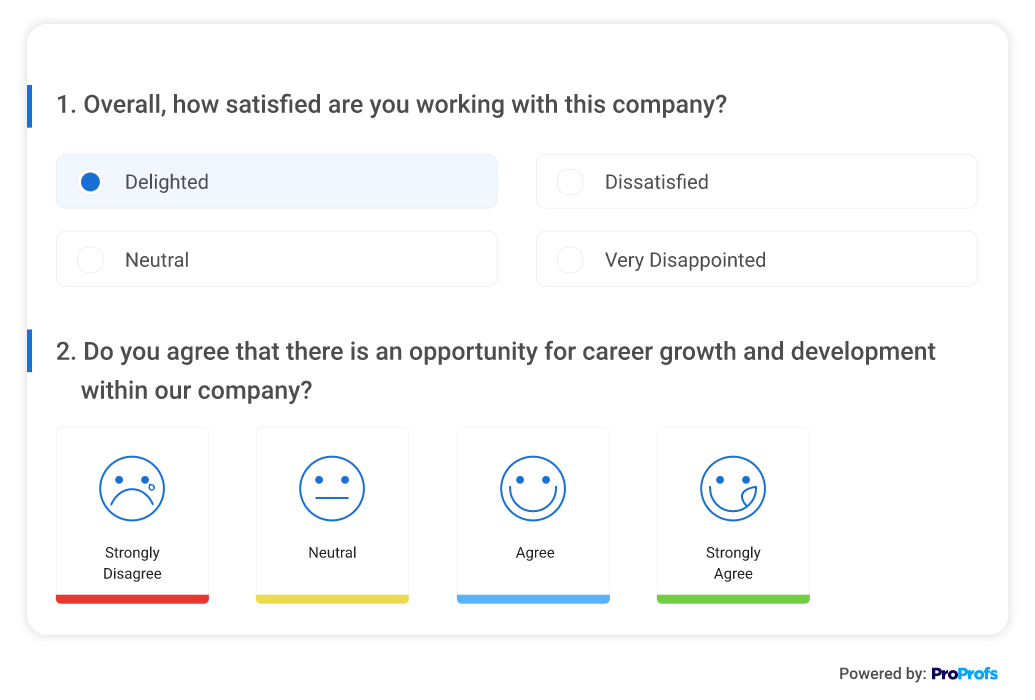Are you a business owner or training manager tasked with training new employees? Do you often wonder how to train new employees in the best possible way?
If yes, I can help you.
In this post, we’ll explore some battle-tested strategies to train new employees, streamline onboarding, and set them up for success.
Keep reading to uncover these valuable insights.
Watch: How to Create an Employee Onboarding Training Program
What Is New Employee Training?
New employee training is another name for orientation and onboarding training. It refers to the process of educating and familiarizing new hires with a company’s policies, culture, procedures, and job responsibilities. Usually, this training occurs shortly after an employee is hired and involves a combination of orientation, onboarding, and role-specific training. The main objective of new hire training is to bring them up to speed and fully prepare them for their job roles and responsibilities so that they become productive members of an organization.
Why Is New Hire Training Important?
New hire training sets the stage for a successful employment relationship. It reduces employee turnover, enhances job satisfaction, and increases productivity. By providing adequate training and support upfront, employers can also mitigate incidents of workplace accidents or errors and build a positive work environment. The training provides a morale boost, removes the need for constant supervision, and makes participants more eligible for promotions.
9 Things to Remember When Training New Employees
I’ve seen many companies, including mine, employ these strategies to standardize and optimize new hire training. All of them reported positive results. They will certainly help you too.
- Prepare Before Arrival
- Welcome New Hires
- Assign a Mentor
- Structure Your Training Plan
- Set Goals and Expectations
- Conduct Regular Check-Ins
- Keep Employees Engaged
- Evaluate and Adjust the Training Program
- Create a Long-Term Development Plan
1. Prepare Before Arrival
Before a new employee starts their journey with your company, it’s important to have all the necessary resources and documents ready for them. This includes setting up their workstation, creating an email account, and providing any necessary training materials.
For example, let’s say a new marketing assistant is joining a company. Before their arrival, the HR team should ensure that their desk is set up with a computer and access to relevant software and that they have access to marketing templates and guidelines.
2. Welcome New Hires

Creating a welcoming and positive environment for new hires is crucial to make them feel at home. Introduce them to the team, provide a tour of the office, and organize a team lunch or gathering to help them feel included.
On the first day at my current job, I was given a welcome kit and desk accessories.
In our marketing assistant example, the team members can take turns introducing themselves, sharing a bit about their roles, and expressing excitement about working together.
3. Assign a Mentor
Having a mentor or buddy assigned to a new employee is a smart training strategy. It enables new members to have someone they can turn to for advice while giving the mentor an opportunity to share their knowledge and expertise.
For instance, the new marketing assistant can have a mentor who is an experienced marketer within the company. This mentor can provide guidance on best practices and specific projects and offer insights into company culture.
Watch: How to Mentor Employees | Training Course Introduction
4. Structure Your Training Plan
A well-structured training plan helps new employees understand what they need to learn, how they will be trained, and when.
The following is a sample of the training plan I and other new hires received in the initial days of our onboarding.

It should include a mix of practical on-the-job training, interactive learning, and access to resources such as documentation and training videos.
For example, your training plan can involve job shadowing senior team members, attending webinars on the essentials of the job, and going through the company’s playbook or manual.
5. Set Goals and Expectations
Similar to a training plan, clear goals and expectations should be a key consideration whenever you train a new employee. They help new employees understand what is expected of them and what they need to achieve. Set your learning objectives at the beginning.
Check out this example of training goals or specific outcomes (the What You’ll Learn section) taken from one of ProProfs Training Maker’s courses.
The objectives may include both short-term and long-term goals, as well as specific metrics or targets to strive for.
For example, if you’re training newly hired graphic designers, the goals and expectations may include:
- developing their technical skills in design software
- enhancing their understanding of design principles
- fostering effective communication within the team
The expectations may revolve around meeting project deadlines, producing high-quality design work, and actively seeking feedback for continuous improvement.
Watch: How to Set SMART Goals | Training Course Introduction
6. Conduct Regular Check-Ins

Regular check-in meetings are essential to monitor the progress and development of new employees. These can be weekly or bi-weekly sessions where both the new employee and their supervisor discuss achievements, challenges, and provide feedback.
For example, when I was new at ProProfs, I was given opportunities to sit for a one-on-one session with my training manager at least once a week and discuss how things were shaping up.
During these meetings, new hires can discuss their ongoing projects, seek clarification on tasks, and share any obstacles they may be facing.
7. Keep Employees Engaged

When you maintain engagement during new employee training, it can boost motivation and productivity.
For this, you can:
- implement interactive and hands-on activities
- foster teamwork
- provide continuous opportunities for skill-building
- facilitate self-paced learning
These steps can help keep new employees engaged.
For example, give your new hires a chance to lead a small project and collaborate with other team members to encourage active participation, engagement, and learning.
8. Evaluate and Adjust the Training Program
Regular evaluation of the training program is necessary to ensure its effectiveness and make any necessary adjustments. This can be done through feedback surveys, individual assessments, or team discussions.

Managers should seek input from both the new employees and the mentors to gather insights on what is working well and what could be improved.
The feedback collected can help identify areas where additional training or resources may be needed to enhance their skills.
9. Create a Long-Term Development Plan

Employee training and growth is not limited just to the onboarding phase. It should continue beyond it.
To keep retaining and motivating new employees, make it a point to create a long-term development plan that outlines their potential growth within the organization.
This plan can include opportunities for professional development, promotion tracks, and exposure to new projects and responsibilities.
To use my marketing assistant example again, such a plan may involve attending industry conferences, participating in advanced training programs, and eventually progressing into a senior marketing role within the company.
Give New Employee Training Your Best Shot!
That was all about how to train new employees effectively. These best practices, when implemented the right way, can supercharge your training programs and bring positive results. The key is to start your new hires’ professional journey with you on the right note and sustain a culture of learning.
The bottom line is that by training new hires the right way, you boost their morale, improve efficiency and productivity, and ensure customer satisfaction.
ProProfs Training Maker can be your reliable ally in fulfilling this major responsibility. It not only provides a learning management system (LMS) but also ready-to-go courses and templates. Using this LMS software, you can centrally manage new employee training anytime, anywhere.
 Tips
Tips
We’d love to hear your tips & suggestions on this article!
Get Free Employee Training Software — All Features, Forever.
We've helped 567 companies train 200,000+ employees. Create courses in under a minute with our AI LMS or use 200+ ready-made courses on compliance, harassment, DEI, onboarding, and more!

 We'd love your feedback!
We'd love your feedback! Thanks for your feedback!
Thanks for your feedback!







